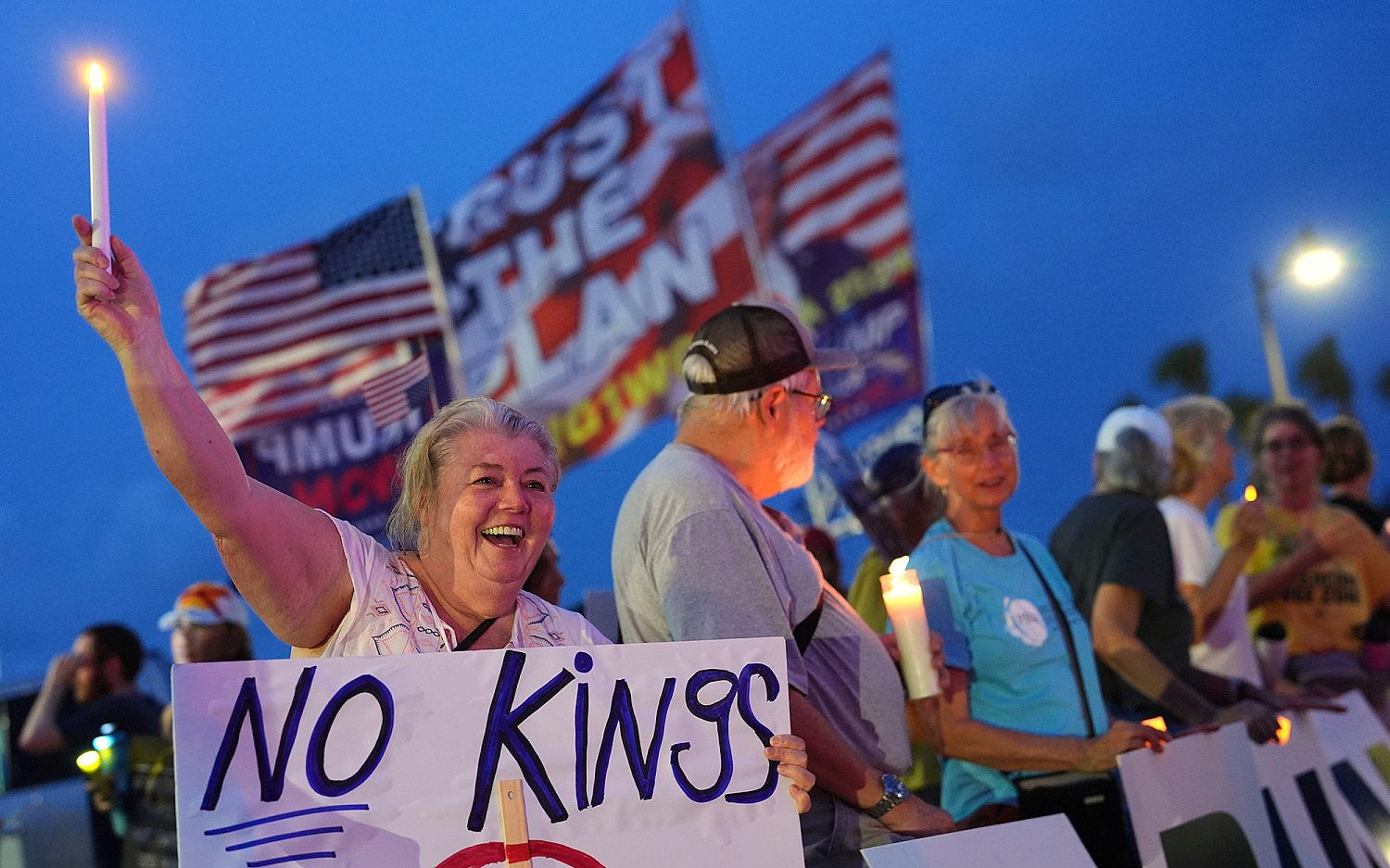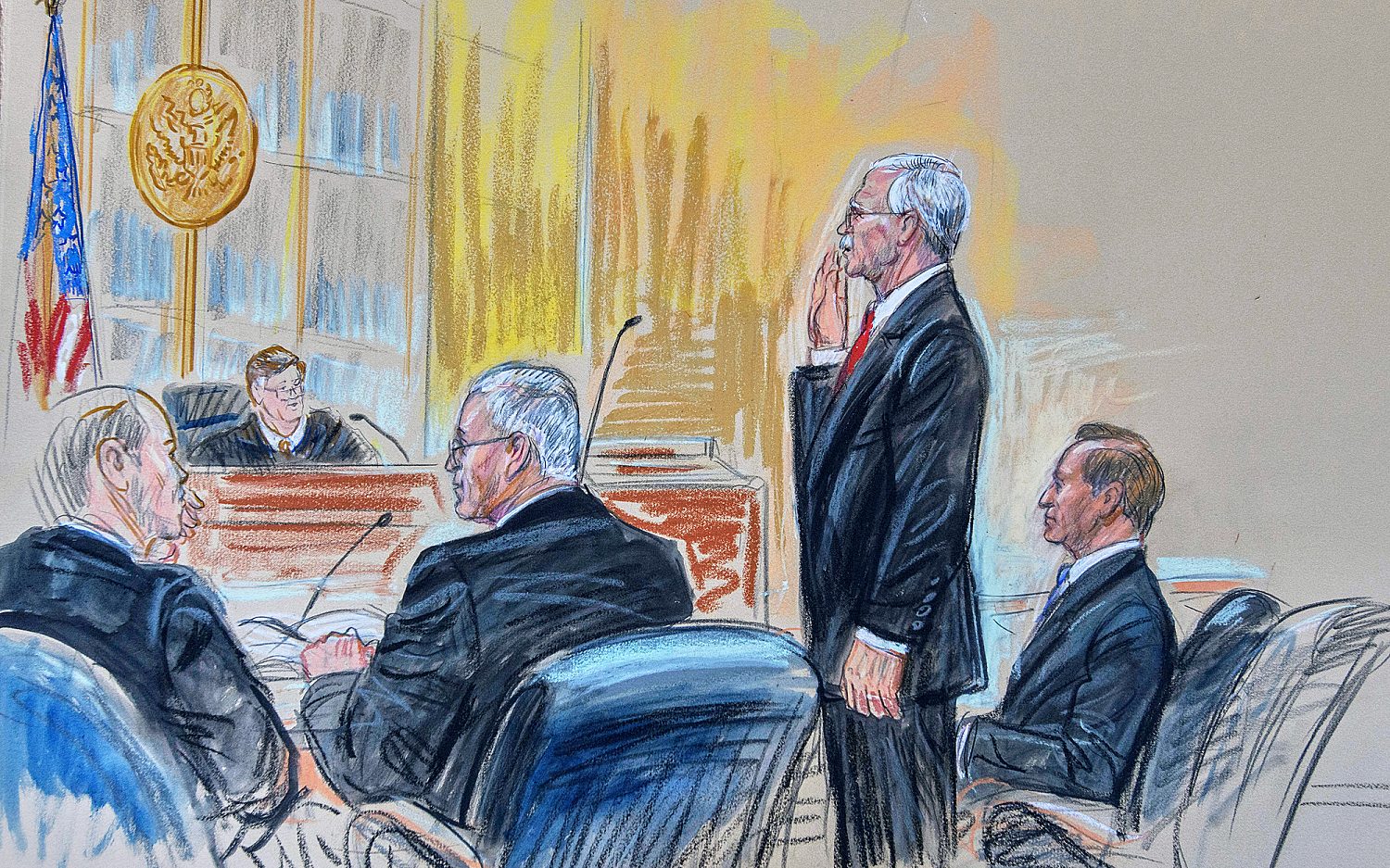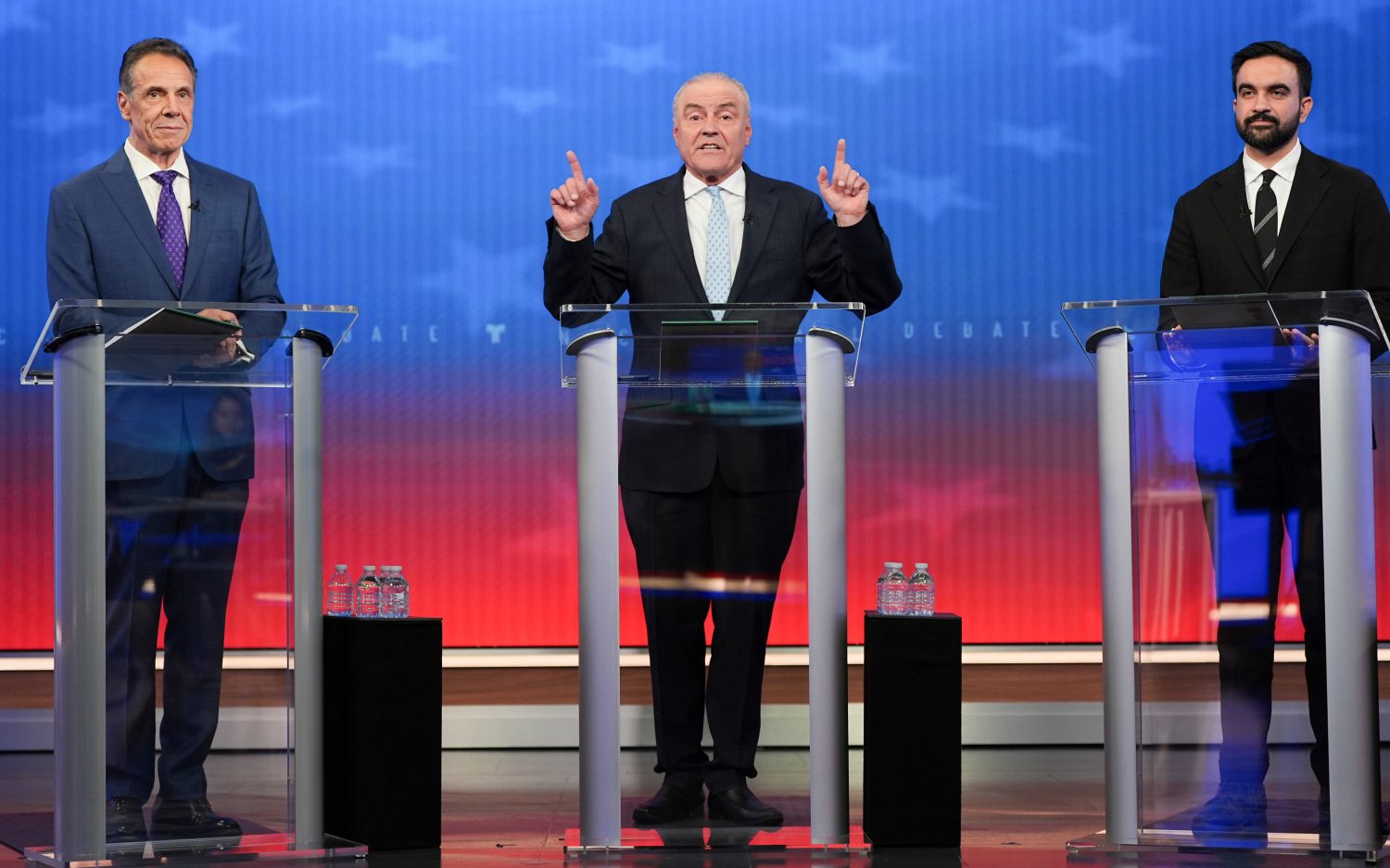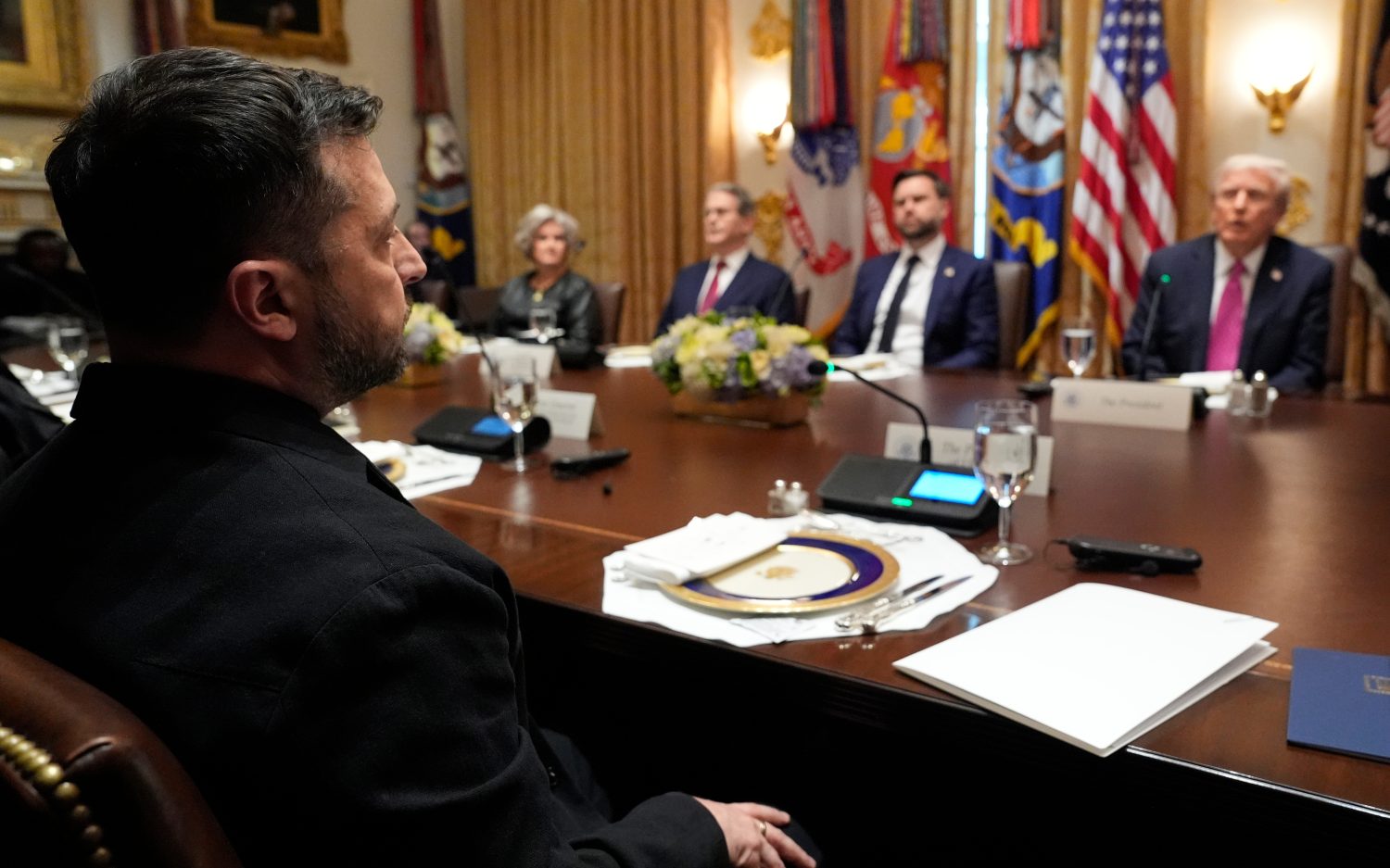Festive follies
With the changing political landscape, are national nominating conventions worth all the trouble and expense?
At their 1924 national convention in New York, it took Democrats 103 ballots over 17 days to nominate John W. Davis, a West Virginia congressman, as their presidential candidate.
At the 1976 Republican National Convention in Kansas City, incumbent President Gerald Ford had to beat back challenger Ronald Reagan for the nomination.
Meanwhile, the 2012 versions of these political carnivals held just two surprises: Clint Eastwood talking to an empty chair at the Republican shindig in Tampa, Fla., and Democrats trying to erase the mention of God in their platform in Charlotte, N.C.
With the state presidential primary system placing more control in the hands of voters and less in the hands of party power brokers, there hasn't been a political convention of real consequence, one in which the outcome was in doubt, for more than two generations.
Yet Republicans and Democrats continue to hold these tightly orchestrated festivals every four years. With the maturation of the 24-hour news cycle and the explosion of social media, it is fair to wonder if the conventions still serve a meaningful purpose in the presidential campaigns of the 21st century.
Sure, the events do provide both parties with a prime-time platform to present the narrative they plan to push during the fall's final campaign sprint. And this year in Tampa, Republicans touted challenger Mitt Romney as possessing the skill sets and experience necessary to solve the nation's economic ills. In Charlotte, Democrats argued that President Barack Obama just needs more time to get the nation back on track. Both campaigns used slick videos and speeches that bordered on idolatry to tell the biography of their candidates in the most mythical terms. Predictably, the delegates at both conventions madly cheered promises that likely won't be kept and will just get redelivered in four more years at new arenas packed with still-cheering crowds.
But this year network television devoted just one hour of prime-time coverage each day to the conventions. And on the second day of the Democrats' proceedings, NBC opted to show the first game of the new National Football League season instead of former President Bill Clinton's address. NBC executives probably made the right choice: The week before, ESPN's Thursday night college football game drew its highest ratings in more than a decade despite going opposite the GOP convention's final night.
The biggest argument for rethinking the conventions is their cost. Congress earmarked $18 million of taxpayer money for each party's convention this year, which is just a fraction of the funds used by operatives to infuse the events with the glitz and glamour mostly seen at entertainment awards shows. But it is hard to stomach politicians talking about the nation's debt (Republicans even had a real-time debt clock ticking off like a scoreboard at the Tampa Bay Times Forum), when you consider how much money is being spent to put on these shows. The stage used by the Republicans in Tampa, with high-resolution digital screens displaying an ever-changing array of images as a backdrop, cost $2.5 million.
"There is no justification for spending public funds on booze, balloons, and confetti when both parties are awash in campaign donations," Sen. Tom Coburn, R-Okla., said earlier this summer when he introduced legislation to bar the use of taxpayer funds for future conventions.
What's worse, the combined $36 million allotted by Congress for the conventions does not include the $100 million also appropriated by Congress to pay for security at the events.
In the post 9/11 world, an alphabet soup of government security agencies, from the ATF to the TSA, descended on Tampa and Charlotte over the last two weeks. They turned both places into virtual occupied cites complete with a maze of metal fences set up to mark the boundaries.
Published reports placed the number of security and enforcement agencies involved at 50. Thousands of police officers from as far away as Chicago used bicycles, motorcycles, horses, and their feet to patrol a security perimeter that often forced convention goers to walk 30 minutes or longer in the humid heat to get from event to event. The FBI, the National Guard, the Secret Service, the U.S. Capitol Police, the U.S. Marshals, and even forces from the Environmental Protection Agency and the U.S. Postal Inspection Service joined police in turning the two cities into what must have been the two safest spots on the planet. Helicopters circled overhead in continuous loops, the noise from their blades giving me flashbacks to the time I spent as an embedded reporter in Iraq.
Just one other group rivaled the amount of security personal at the conventions: journalists. More than 15,000 journalists from all over the world attended the conventions. That's 15,000 reporters at each convention, outnumbering delegates by nearly 3-to-1.
It cost media organizations an estimated $60 million (thankfully not taxpayer money) to keep up with each other at the conventions. The biggest media outlets recreated entire newsrooms in both cities. Blue curtains served as temporary walls, dividing The New York Times from the Associated Press and CBS News from ABC News. With security standing guard at each of their entrances, the makeshift newsrooms contained computers lined up on desks, big-screen televisions, and break rooms with couches and catered food.
It made it a challenge to find a delegate to interview when nearly every person you passed wore a press badge. Every evening as I left the convention center to head to the arena for that night's speeches, I was amazed at how many reporters remained behind, seated and staring at computer screens on their temporary desks. I guess they were too busy tweeting, blogging, or writing internet and print stories to bother covering each night's main event in person. I even passed one radio reporter talking about the electric atmosphere of the convention during a live report that he conducted while at his media outlet's press area buried in the convention center's quiet basement.
But not all media organizations remained stuck in the convention center's dungeons. CNN spent an estimated $2 million creating its own temporary restaurant, complete with a large neon sign at the entrance proudly identifying it as the "CNN Grill." There you could get free food and drinks, but only if you had special badges. The Huffington Post decided to offer more than free food. At their "Oasis" spot, reporters and delegates could attend free yoga classes and get sleep consultations, stress reduction advice, and back rubs.
Traditional media outlet The Washington Post held "Politics and Pints" trivia nights while new media outlet Buzzfeed hosted a party at the Florida Aquarium in Tampa that included women dressed as mermaids swimming in the tanks and photo opportunities with live penguins.
Why go cover panel discussions on immigration reform or presentations on Medicare when you can have your picture taken with penguins?
I arrived home from the conventions with more swag than news, including a pedometer courtesy of the Democratic National Convention that I can't seem to get past counting 500 steps even though I know I walked several thousand steps each day just getting through all the security checkpoints.
I also came away with a greater understanding of recycling, as volunteers sat beside the trash cans at the Democratic convention ready to inform you what trash was supposed to go where: the compost, recycle or landfill bins.
Finally, though, I left each convention wondering if all of this was even necessary.
An actual newsletter worth subscribing to instead of just a collection of links. —Adam
Sign up to receive The Sift email newsletter each weekday morning for the latest headlines from WORLD’s breaking news team.





Please wait while we load the latest comments...
Comments
Please register, subscribe, or log in to comment on this article.